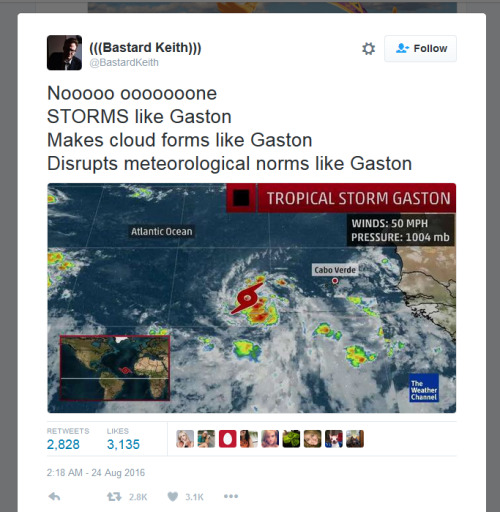Stubborn-turtle-blog

More Posts from Stubborn-turtle-blog and Others
I think it's Java? Just really, really bad Java

learning to lead
you think you’re gonna be like

but really it’s like

hey man at least I can keep my feet while I’m turning a girl o-kay

Samantha Payne’s startup Open Bionics allows anyone in the world to download and 3D print their own bionic limbs.
Tilly was just 15 months old when she had to have her hand amputated after contracting meningitis septicaemia. Now, with a bionic arm from Open Bionics, Tilly can move all of her fingers and perform more complex movements. EMG sensors on her arm detect muscle movement, telling her bionic arm how quickly or firmly to squeeze its fingers.



House With Unique Pivoting Door
Architects- Diego Guayasamin Arquitectos Location- Quito, Ecuador Images- Sebastián Crespo Source- contemporist
*for design inspiration, follow @designismymuse

After the devastating earthquake in Amatrice, Italy, on August 24th, the Vigili del Fuoco (Italian fire brigade) requested assistance from the TRADR (Long-Term Human-Robot Teaming for Robot-Assisted Disaster Response) project (EU FP7 framework, grant No. 60963). TRADR deployed two Unmanned Ground Vehicles (UGVs) and three Unmanned Aerial Vehicles (UAVs) to assist the post-earthquake response in Amatrice.
The task was to use robots to provide 3D textured models of two churches, San Francesco and Sant’ Agostino, national heritage monuments from the XIVth century. Both were in a state of partial collapse and in need of shoring to prevent potential further destruction. The models should serve to plan the shoring operations and to assess the state of various objects of cultural value inside the churches, such as valuable frescos.
The UGVs successfully entered the San Francesco church, teleoperated entirely out of line of sight and partially in collaboration. For part of the mission, one UGV provided a view of the other one to enable maneuvering in very constrained space with low connection bandwidth. One of the UGVs operated in the church continuously for four hours. A UAV was also present for a short time in parallel and provided additional views of the UGVs.








Samara ( New Designstudio at Airbnb ! ). Yoshino Cedar House. Yoshino. Japan. photos: Edward Caruso & Airbnb
Conceived as part of Kenya Hara’s House Vision exhibition in Tokyo, Japan. Co-created with Tokyo-based architect Go Hasegawa. Samara looked beyond a traditional model of home sharing, keeping in mind an entire community rather than an individual host. (more: Samara )
Proportional risk
I've begun to develop a strong fear of the weather. Lightning and wind also terrify me. When someone is afraid of flying, there are statistics which could help them understand how little a risk they are actually taking. With this statistic method in mind, is there anything I could remind myself of when I begin to become frightened, that could help relax me a bit? Thank you :)
Lightning is something that’s serious, but with most things as long as you approach it intelligently, you’ll be fine!
The National Safety Council organized a handy chart of “What are the Odds of Dying From” that has some handy statistics. There’s a lot more things that we are significantly more at risk for statistically than lightning. For instance you have a 1 in 672 chance of dying as a pedestrian in your life while a 1 in 174,426 chance of dying from lightning. Yet we don’t carry the same fear when walking as we do for lightning.

Something to consider here, we’re much more often “exposed” to being pedestrians than we are exposed to lightning, so this makes a bit of sense that the numbers are so skewed, but the point of fear still stands.
Lightning is serious business, but as I said earlier we need to approach lightning intelligently.

If you look at the an analysis of lightning deaths in the US about two thirds of incidents occurred to people engaged in outdoor activities. So basically people that are outside enjoying the day when a storm comes along, and they decide to either watch the storm from an unsafe place, or keep going with the activity. Going further into outdoor “leisure” activities, of that two thirds about 35% of those activities were water related (largely fishing, but hey, why not looks at the study yourself!).
Worth mentioning, the study also pointed out that 79% of victims were male - being okay with risky behaviours doesn’t make you cool and tough, it makes you an idiot. As the study put it:
Possible explanationsfor this finding are that males are unaware of all the dangers associated with lightning, are more likely tobe in vulnerable situations, are unwilling to be inconvenienced by the threat of lightning, are in situationsthat make it difficult to get to a safe place in a timely manner, don’t react quickly to the lightning threat, orany combination of these explanations. In short, because of their behavior, males are at a higher risk ofbeing struck and, consequently, are struck and killed by lightning more often than females.
Here’s a breakdown of activities people are doing when they die from a lightning strike:

Notice these are all things that are outside! The study stated that things that contributed to lightning fatalities were people’s unwillingness to postpone activities, not being aware of approaching storms (you’re either weatherwise, or otherwise!), being in a vulnerable location, an inability or unwillingness to get to a safe place.
So how do we be safe during a thunderstorm? Do as the NOAA says “when thunder roars, go indoors”! If you know there are going to be storms that day stay alert and take a glance at a radar map every now and then (lord knows you probably have a smart phone), and have an idea of where you’ll go when a storm is near. If you’re unable to get indoors avoid hilltops, isolated tall objects like poles or trees, spread out if you’re in a group, and try to avoid wet items and areas - these won’t make you safe, but will slightly decrease your risk. The only completely safe action is getting inside a building or vehicle.

Have a look over this page on lightning safety and these tips for more info.
So bottom line, should you have a healthy respect for lightning? Yes. Should you be terrified of lightning? No. Be smart and follow the safety tips, you’ll be alright.
Thanks for reading, and I hope this helped!

-
 ngp311 liked this · 7 years ago
ngp311 liked this · 7 years ago -
 metasapient liked this · 7 years ago
metasapient liked this · 7 years ago -
 jerveypreston liked this · 7 years ago
jerveypreston liked this · 7 years ago -
 callyoumaybe reblogged this · 7 years ago
callyoumaybe reblogged this · 7 years ago -
 callyoumaybe liked this · 7 years ago
callyoumaybe liked this · 7 years ago -
 shitmysossay liked this · 7 years ago
shitmysossay liked this · 7 years ago -
 zaramei reblogged this · 7 years ago
zaramei reblogged this · 7 years ago -
 thepiscesprincesa reblogged this · 7 years ago
thepiscesprincesa reblogged this · 7 years ago -
 roysvisionblog reblogged this · 7 years ago
roysvisionblog reblogged this · 7 years ago -
 a-halo-of-stars reblogged this · 7 years ago
a-halo-of-stars reblogged this · 7 years ago -
 a-halo-of-stars liked this · 7 years ago
a-halo-of-stars liked this · 7 years ago -
 eeelysianfields reblogged this · 7 years ago
eeelysianfields reblogged this · 7 years ago -
 eclecticallyqueer reblogged this · 7 years ago
eclecticallyqueer reblogged this · 7 years ago -
 knockels reblogged this · 7 years ago
knockels reblogged this · 7 years ago -
 a-lot-of-stories-to-tell reblogged this · 7 years ago
a-lot-of-stories-to-tell reblogged this · 7 years ago -
 modernmonkeymind liked this · 8 years ago
modernmonkeymind liked this · 8 years ago -
 mellow-numel liked this · 8 years ago
mellow-numel liked this · 8 years ago -
 justanothershirtlessdavidking reblogged this · 8 years ago
justanothershirtlessdavidking reblogged this · 8 years ago -
 woahwoahwoahspagettios-blog liked this · 8 years ago
woahwoahwoahspagettios-blog liked this · 8 years ago -
 haopro liked this · 8 years ago
haopro liked this · 8 years ago -
 ginnerobot reblogged this · 8 years ago
ginnerobot reblogged this · 8 years ago -
 kyoshi-warrior-in-training reblogged this · 8 years ago
kyoshi-warrior-in-training reblogged this · 8 years ago -
 standard-vixen reblogged this · 8 years ago
standard-vixen reblogged this · 8 years ago -
 corvid-shmorvid liked this · 8 years ago
corvid-shmorvid liked this · 8 years ago -
 caffeinezilla liked this · 8 years ago
caffeinezilla liked this · 8 years ago -
 unica-angel reblogged this · 8 years ago
unica-angel reblogged this · 8 years ago -
 vinbep liked this · 8 years ago
vinbep liked this · 8 years ago -
 nao-kun reblogged this · 8 years ago
nao-kun reblogged this · 8 years ago -
 potatoobsessed999 liked this · 8 years ago
potatoobsessed999 liked this · 8 years ago -
 slothgangang reblogged this · 8 years ago
slothgangang reblogged this · 8 years ago -
 slothgangang liked this · 8 years ago
slothgangang liked this · 8 years ago -
 the-woman-upstairs reblogged this · 8 years ago
the-woman-upstairs reblogged this · 8 years ago -
 spaghettihoopsandraisins liked this · 8 years ago
spaghettihoopsandraisins liked this · 8 years ago
Gaming, Science, History, Feminism, and all other manners of geekery. Also a lot of dance
243 posts











